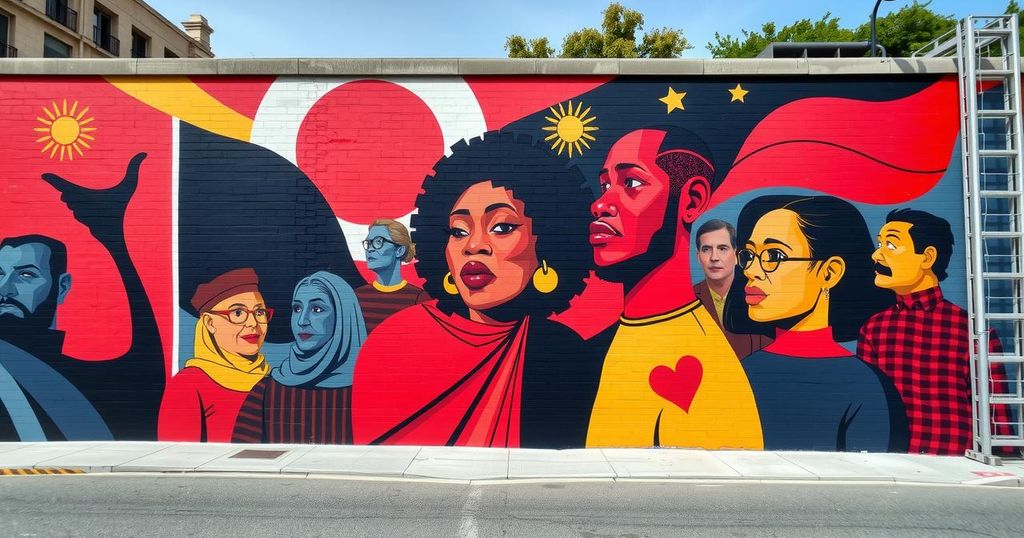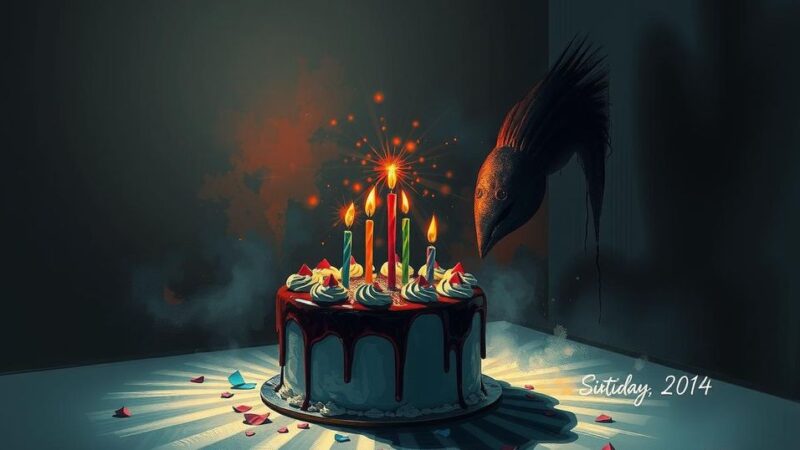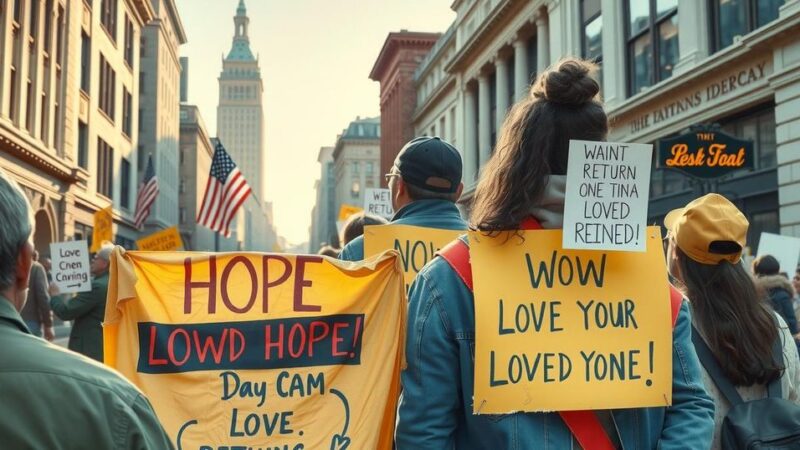This article examines the enduring legacy of murals from Chile’s Popular Unity government, emphasizing their global political impact. It features insights from Alejandro ‘Mono’ Gonzalez, who discusses the cultural movements of the 1960s, grassroots activism in art, and the revival of artistic initiatives following Chile’s 1973 coup. Mono’s continued work underscores the importance of art as a tool for political education and cultural resistance.
The murals from Chile’s Popular Unity government, although suppressed domestically, have gained worldwide recognition for their political significance. This article delves into their lasting influence and features insights from Alejandro ‘Mono’ Gonzalez, a notable muralist. He reflects on the vibrant cultural movements of the 1960s, detailing how music and literature shaped a politically aware society amid repression.
During a recent interview with Mono Gonzalez at the National Library of Chile, he discussed the exhibition ‘Patria negra y roja’, celebrating the life’s work of painter José Venturelli. Known for his connections with renowned Mexican muralists, Venturelli played a pivotal role in advocating cultural exchange within Latin America and beyond, serving as a cultural ambassador.
Mono highlighted the cultural dynamism of the 1960s, driven by influential musical groups and writers across Latin America. He indicated the impact of the Cuban Revolution on graphic arts, especially in the creation of politically charged posters, which later influenced the Chilean art scene. He also referenced significant global events in 1968 which galvanized the student movement in Mexico, showcasing grassroots political activism through art.
The rise of political street art was propelled by organizations, or brigades, that emerged in response to the political climate. These brigades utilized murals to communicate vital messages and galvanize support. The night before Allende’s successful presidential election in 1970, they mobilized over 120 brigades to paint murals across Chile, marking a significant moment in the country’s history.
With Allende’s election victory promising radical reforms, the government sought to nationalize key industries and promote cultural initiatives like the Museo de la Solidaridad. However, following the coup led by General Pinochet in 1973, there was a brutal suppression of these artistic expressions as the regime aimed to obliterate Marxist thought along with physical artwork, including those in the museum.
Despite attempts to dismantle the museum’s legacy, Chilean cultural workers revived it from abroad under the name Salvador Allende International Museum of Resistance until it was restored in 1991. Mono emphasizes that while the dictatorship sought to eliminate murals, their essence persisted internationally, with exiled artists disseminating their message worldwide. Artists such as Malangatana Ngwenya in Mozambique exemplify this diaspora’s cultural influence.
At seventy-eight, Gonzalez remains active in the art scene, transitioning from large murals to posters due to funding and logistical challenges. He believes that posters can effectively convey critical messages in urban environments, and he continues to engage with youth through workshops, instilling the importance of art as a tool for political education.
In his view, cultural resistance is paramount, and artwork must reflect contemporary struggles, whether in Chile or globally. He laments the loss of structured political education for artists but emphasizes the need to adapt and create artworks that resonate with current social issues.
Additionally, in upcoming events, the Utopix collective will host poster exhibitions during the Havana Book Fair, which features international artists and their contributions to political discourse.
In conclusion, the murals and artistic movements associated with Chile’s Popular Unity government have transcended borders, representing a significant legacy of political expression. Despite oppressive regimes attempting to censor these artworks, their influence has proliferated globally, exemplified by artists who carry forward the revolutionary spirit. Alejandro ‘Mono’ Gonzalez exemplifies this resilience, continuing to inspire and educate through art, ensuring that the voices of the people persist in their quests for justice and cultural representation.
Original Source: thetricontinental.org






